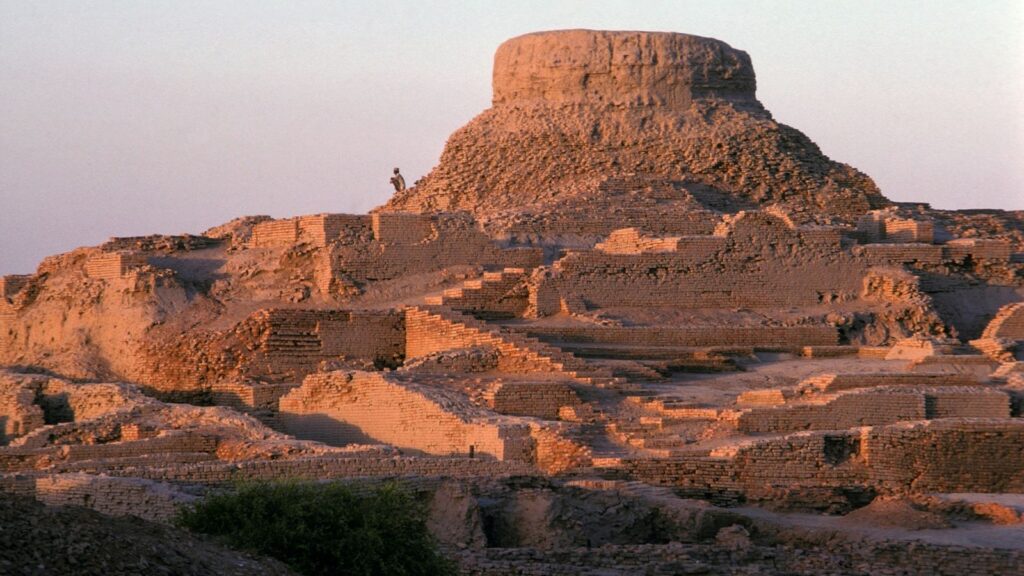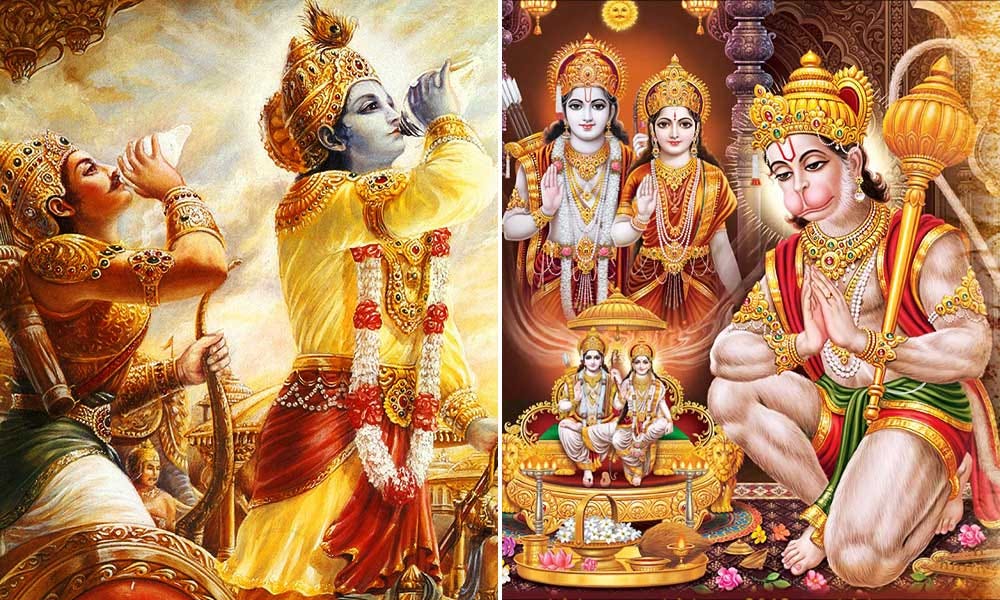Ancient India: A Tapestry of Greatness and Historical Significance

Ancient India was a land of great civilizations, rich cultures, and diverse peoples. Indian people made significant contributions to the world in the fields of mathematics, science, philosophy, and religion. Archaeology and our genetic storybooks reveal that India’s lands were gradually explored by different groups of people over these millennia. “Out of Africa” odyssey, a term that describes the grand adventure of our early human ancestors leaving their African roots to explore distant lands, including places like India. This adventure began about 70,000 to 100,000 years ago, starring our human heroes, the Homo sapiens. Let’s delve into the intricacies of this captivating journey, supported by archaeological findings and scholarly insights.
Harappan Civilization: A Monument of Brilliance
The Indus Valley Civilization, also known as the Harappan Civilization, is one of the oldest and most intriguing ancient civilizations that flourished in the Indian subcontinent. This remarkable civilization emerged around 9,500 years ago according to historian Abhijit Chavda. It thrived in the fertile plains of what is now Pakistan and northwest India. It is named after the Indus River, which played a vital role in the development and sustenance of its urban centers.
At the heart of the Indus Valley Civilization were its sophisticated urban centers. Notable cities like Mohenjo-daro and Harappa boasted advanced urban planning, a grid-like layout, and an efficient drainage system. These cities were marked by well-constructed brick buildings, some of which had multiple stories, a rarity for the time. This architectural prowess showcases the civilization’s engineering expertise. Mohenjo-daro was the first world-fully urbanized and fully industrialized civilization, as described by Abhijit Chavda.
The Indus Valley people were known for their mastery of craftsmanship and trade. Archaeological excavations have unearthed intricate artifacts made from materials such as pottery, metals, and semi-precious stones. The presence of seals, featuring an enigmatic script that has not been fully deciphered, suggests the existence of a written language. The seals also depict various animals, humans, and symbols, providing insight into the culture’s beliefs and practices.The Indus Valley civilization has left an important cultural imprint on present-day India. Certain symbols and motifs found in their artifacts and seals, such as the “unicorn” and the “seal of Pashupati”, would indicate links with later religious and cultural symbols in India, particularly in Hinduism.
Trade was a cornerstone of the Indus Valley Civilization’s prosperity. Evidence of trade networks has been discovered, linking the civilization to Mesopotamia and other regions. This commerce facilitated the exchange of goods such as textiles, pottery, and possibly even luxury items like precious metals and gemstones.
Discrediting the Aryan Invasion Theory
The Aryan Invasion theory, once a dominant narrative, has undergone reevaluation in recent times. The Aryan Invasion Theory, which proposed that Indo-European Aryansinvaded the Indian subcontinent and displaced Dravidian populations, has faced significant challenges and reinterpretations in recent years. One of the primary criticisms against the Aryan Invasion Theory is the absence of concrete archaeological evidence supporting large-scale invasions or migrations. Critics argue that there is a remarkable continuity in certain aspects of culture, language, and genetics across the Indian subcontinent, which contradicts the idea of a sudden and massive influx of foreign populations. The Rigveda, a collection of ancient Sanskrit hymns, forms the core of Vedic literature and is often used to trace the history of the Aryans. However, proponents of the indigenous theory argue that the Rigvedic hymns show a familiarity with the geographical and ecological specifics of the Indian subcontinent, suggesting that they were composed within the region rather than brought in through migration. Some scholars propose alternative migration hypotheses, suggesting that there might have been movements of people within the Indian subcontinent itself, rather than from outside. The Aryan Invasion Theory’s validity has been increasingly questioned due to the lack of strong evidence.

Indian origins of Greece and the ancient world
According to author Ravi Prakash Arya, there may have been cultural, linguistic or even genetic links between ancient India and Greece, leading to the development of certain aspects of Greek civilization and culture. There are linguistic similarities between certain Sanskrit and Greek words. This suggests that there may have been ancient contacts or interactions between these civilizations that influenced the development of each. Mythological themes and cultural motifs are also found.
Both Indian and Greek mythologies feature creation stories that involve cosmic forces or deities shaping the world. In the Indian context, there is the concept of “Brahma” as creator in Hindu cosmology, while in Greek mythology, “Chaos” is often seen as the primordial state before the cosmos took shape. Both cultures have produced heroic epics. India has the “Mahabharata” and the “Ramayana”, while Greece has the “Iliad” and the “Odyssey”. In Indian philosophy, “dharma” represents moral order, while in Greek thought, concepts such as “themis” refer to divine law and order ; which is another resounding similarity. Notions of an afterlife or an underworld where souls are judged are present in both cultures. The concept of “Yama” in Hinduism and the Greek realm of Hades share thematic similarities in their roles as judges of the departed.
Dwarka’s Submerged Marvel: Merging Myth and Reality
The city of Dwarka, featured prominently in the Ramayana and Mahabharata epics, was believed to be a mythical creation. However, underwater archaeological explorations off the coast of Gujarat in 2001 brought forth startling revelations. The sunken city’s structures align with ancient descriptions, giving credence to the possibility that Dwarka was indeed a thriving city submerged by the Arabian Sea. This discovery bridges the gap between mythology and historical evidence. One of the most important archaeological discoveries of recent times is the underwater ruins of Dwarka. Dwarka is a city that is mentioned in the Hindu epics the Ramayana and the Mahabharata. According to these epics, Dwarka was the capital of the kingdom of Krishna, and it was destroyed by a great flood. In 2001, a team of Indian archaeologists discovered the ruins of Dwarka beneath the Arabian Sea. These ruins provide physical evidence for the existence of Dwarka, and they suggest that the Ramayana and the Mahabharata may be based on real events.Archaeological evidence directly validating the events and characters of the ancient Indian epics, the Ramayana and the Mahabharata, is present. Excavations have uncovered structures in places like Ayodhya and Indraprastha that have been associated with these stories. As is the Ram Setu, a natural limestone bridge in the shallow waters between India and Sri Lanka. It is mentioned in the Hindu epic, the Ramayana, where it is described as the bridge built by Lord Rama’s army to link the two countries. Although the existence of the bridge has been debated, geological data and satellite images suggest that certain land formations do exist in the region.
The Ramayana and the Mahabharata are two of the most important epics in Indian history. They are both long poems that tell stories of gods, heroes, and battles. The Ramayana tells the story of Rama, a prince who is exiled from his kingdom and must fight to win back his throne. The Mahabharata tells the story of a great war between two sets of cousins.
These epics are not just works of fiction. They also contain valuable historical information about ancient India. For example, the Ramayana mentions the existence of the Saraswati River, which is now a dry riverbed. This suggests that the Ramayana may be based on real events that took place around 3000 BCE.

India’s Martial Legacy: Cultivating Strength Across Eras
India’s legacy of martial arts is a living testament to its historical prowess. The origins of practices like yoga, karate, and kung fu can be traced back to ancient India. These arts were not only for self-defense but also tools for physical and mental well-being. The legacy endures, with martial arts being integral to India’s military and police forces, reflecting a heritage that transcends time.
Ancient India’s journey was characterized by the rise and fall of civilizations, cultural diffusion, and the emergence of philosophical and scientific wisdom. It was a path marked by both grandeur and challenges, offering valuable lessons in resilience and adaptation. This historical perspective enables us to navigate the present with a deep-rooted sense of identity.In classrooms, the narrative of ancient India should be more than an academic exercise. It should encompass the depth of its achievements, the intricacies of its cultural exchange, and the nuances of its struggles. Providing students with a holistic view nurtures a connection to their heritage and encourages critical thinking by allowing them to engage with primary sources and engage in historical debates.
